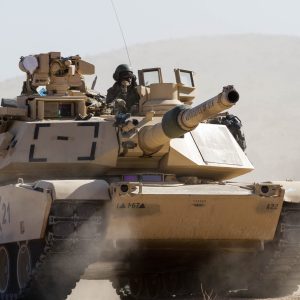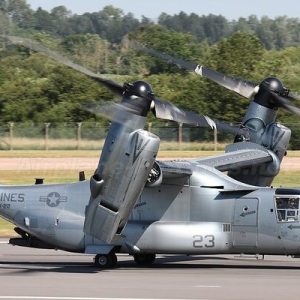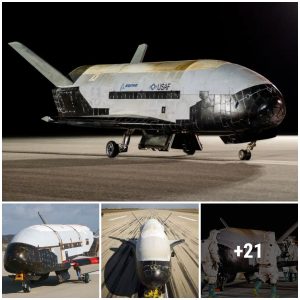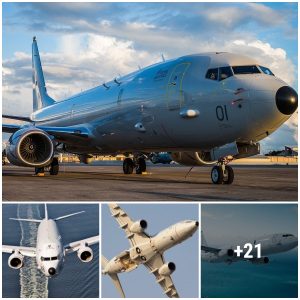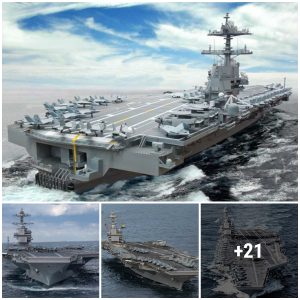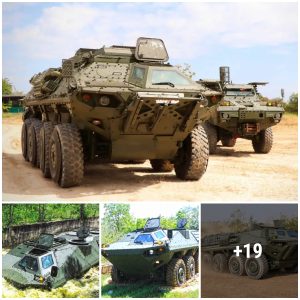If we take a look at the various military air arms across the world, one thing is obvious. That is the fact that the strategic bomber is becoming a dying breed. Large, heavy bomber aircraft are few and far between now, with most bombing roles now carried out by multirole ground attack machines, and other such aircraft like the F-35 Lightning or Eurofighter Typhoon. But some air arms still believe there is a need for a big strategic bomber, something that can deliver big payloads to a particular target.

Russia still has its fleet of Tu-95 Bears, as well as its Tu-22M Backfire and the Tu-160 Blackjack. But America also has a strategic bomber fleet. It has the B-2 Spirit Stealth bomber, the Boeing B-52 Stratofortress, and perhaps the most impressive, the Rockwell B-1B Lancer. The B-1B Lancer is one of the very few supersonic strategic bombers still flying, and still has at least 10 years of service left before it is ultimately replaced by the upcoming Northrop Grumman B-21 Raider. As of right now, though, the B-1B Lancer is surely the world’s ultimate supersonic bomber.

The Origins Of The B-1B Lancer
The B-1B Lancer was born out of a requirement from the United States Air Force for a bomber that could combine the Mach 2 speed of the B-58 Hustler with the payload of the B-52. Initially, the North American XB-70 Valkyrie was the chosen one, but a switch from high level to low level flying thanks to Soviet surface-to-air missiles scuppered that idea. It was soon found out that the XB-70 would actually have less range in a low level role than the B-52, despite having a higher speed. As a result, the B-52 would fly at lower altitudes, even if this was not optimum but it proved to be a flexible aircraft in that role.

Rockwell was soon tasked with building a new supersonic bomber though that could take on this lower level role, after a long series of studies. And what emerged was the B-1A, an aircraft that had a top speed of Mach 2.2 at high altitude and of Mach 0.85 at lower altitudes. Four prototypes were built and the testing program was soon underway. However, rising costs, the new AGM-86 and the beginning of the stealth bomber program scuppered the B-1A program by 1977. What also didn’t help was that it looked like the B-1A was becoming a dinosaur really fast, with the Soviet MiG-31 on the way and it looking like a B-1A would be as easy to shoot down as a B-52.

The B-1B Springs To LifeHowever, after much consideration, President Reagan announced in 1981 that the B-1 program would restart, and the new aircraft would become the B-1B. The new aircraft would have a lower top speed of Mach 1.25 at high altitude, but a higher speed at low level of Mach 0.96. The B-1B would first fly on October 18th 1984, and the jet did have its critics. Namely, it was strongly felt that a B-52 with similar electronics to the B-1B would be equally able to avoid Soviet detection, but the B-1B would have a larger payload than its Boeing cousin.

The B-1B would become a very special bomber. It was of swing-wing design, whereby the wings would swing out for take-off, landing and lower speeds but sweep back as the aircraft got faster. The jet has four General Electric F101-GE-102 afterburning turbofans, powering it to its maximum speed of 830 mph. Following a successful testing program for the aircraft, the B-1B would enter service in June 1985 with the Strategic Air Command. The honor of becoming the first service B-1B was then bestowed upon the second production B-1B built, named “The Star of Abilene”.

The B-1B In Active Service
The B-1B didn’t have the smoothest introduction to service. Engine problems prevented the B-1B from taking part in the Gulf ധąɾ, but they were initially used for strategic nuclear missions, proving a deterrent against the Soviet Union. The B-52 would be the chosen aircraft to serve in the Gulf ധąɾ. The B-1B would continue to serve when SAC became the Air Combat Command, and it first saw combat use in Operation Desert Fox in Iraq during December 1998. The B-1B was also used during Operation Enduring Freedom in Afghanistan and in the 2003 invasion of Iraq.

The B-1B Lancer Today
As of 2022, of the original 100 aircraft, there are 45 B-1B Lancer’s still in service. The US Air Force retired 17 B-1Bs in February 2021, although four are now kept in storage to bolster the current fleet if needed. The Air Force is hoping to keep the B-1B in service until 2036, but it will slowly be replaced from 2025 onwards by the upcoming B-21 Raider, which will eventually also replace the B-2 Spirit and the B-52. For now though, despite a troubled existence and birth, the B-1B continues to serve with the United States Air Force, and will carry on doing so for a little while yet. Not bad for an interim bomber.
